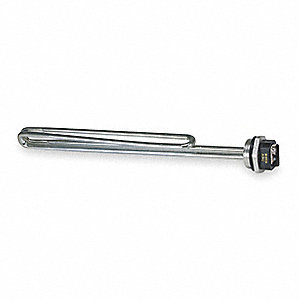Follow along with the video below to see how to install our site as a web app on your home screen.
Note: This feature may not be available in some browsers.
Electric hot water heater heating elements make excellent high power 4500 watt resistors the one in the photo costs only $8. I have 4 heating elements connected together to my 12 KW project I originally built 20 years ago. If I only use it 20 seconds each time water circulation & water cooling is not required. If I use it 2 minutes each time 6 to 8 times in 30 minutes 5 gallons of water gets hot quick. These can not be cooled with a fan.

No, its for 100's of cycles...so a proper spec is required.
Pretty sure those don't do much on a 2 volt power feed.
Well that makes gary's suggestion a failed one.
I was looking at my wire collection.Nichrome
If you put 5 of the 1500W in parallel you get 1.8 ohms. Put more in parallel to get the ohm value you want. 9 in parallel = 1 ohm.
I was looking at my wire collection.
I have some wire that is probably #6.
12 feet = 25mOhms.
I think if the wire is laying on the floor it will hold 80A. (as long as air can get to it) If the wire is not in free air the temp will clime too high.
A 12 foot role will heat and the inside conductors will burn. But if the role is in a metal bucket of water it should cool off the inter turns.
The hardware store has Cu or Al wire up to the size of my thumb. (house wire)
Look at wire size + current + temperature rise.
I was just thinking about what you can get from the store in your town.
If the battery is on the floor and you ran the wire from the battery to the sealing and back to the battery, might work. Or go with heaver wire and run up/down and up/down. If the wire only gets warm it is much safer than using wire that gets red hot.
